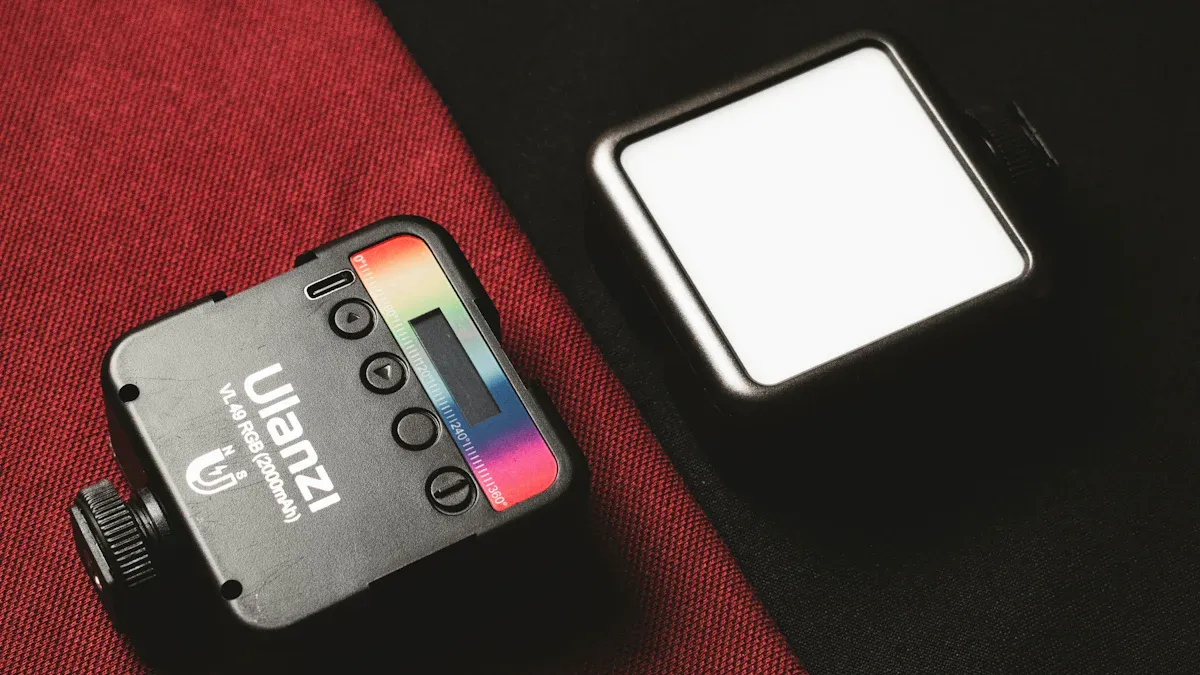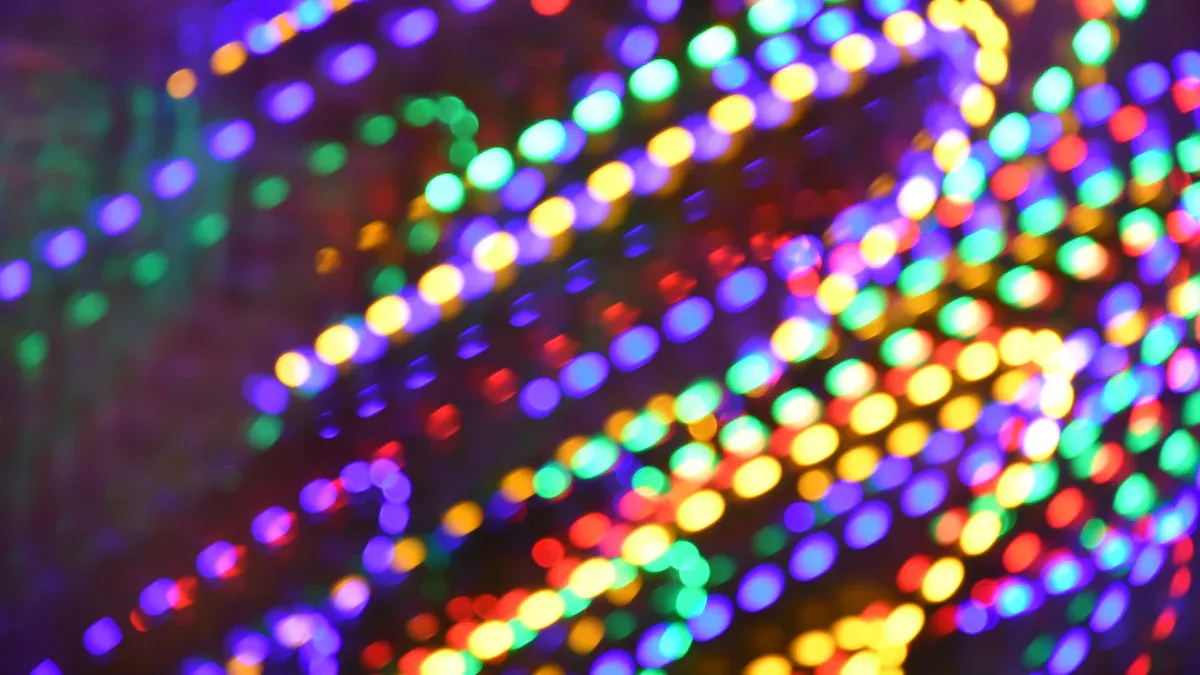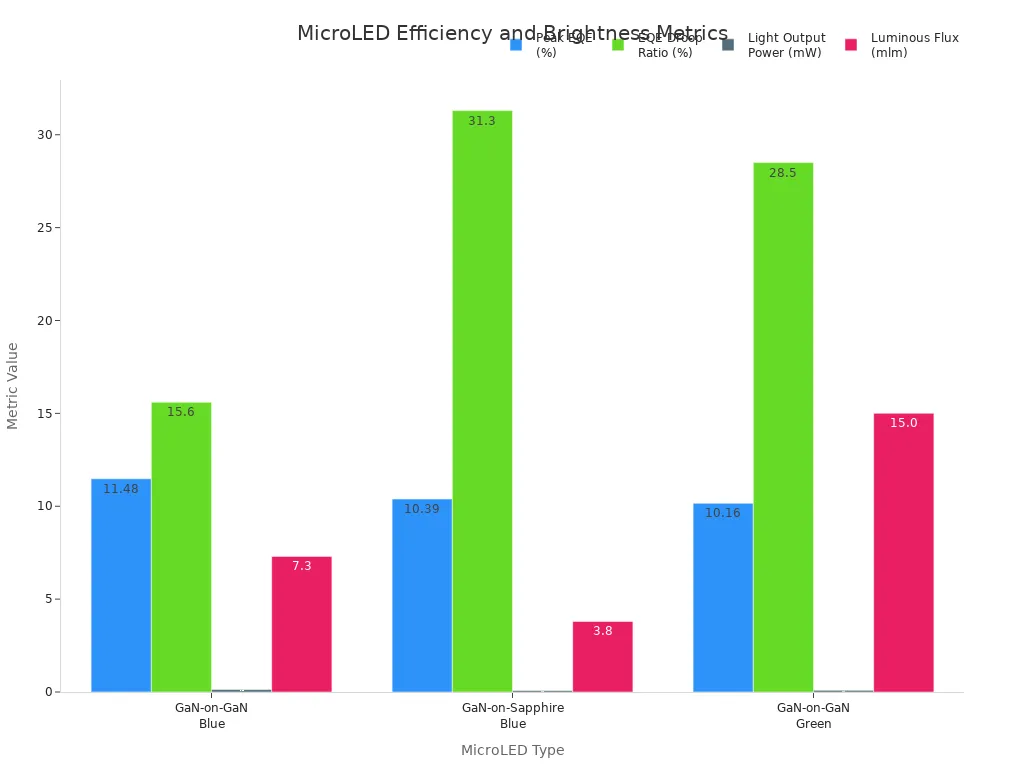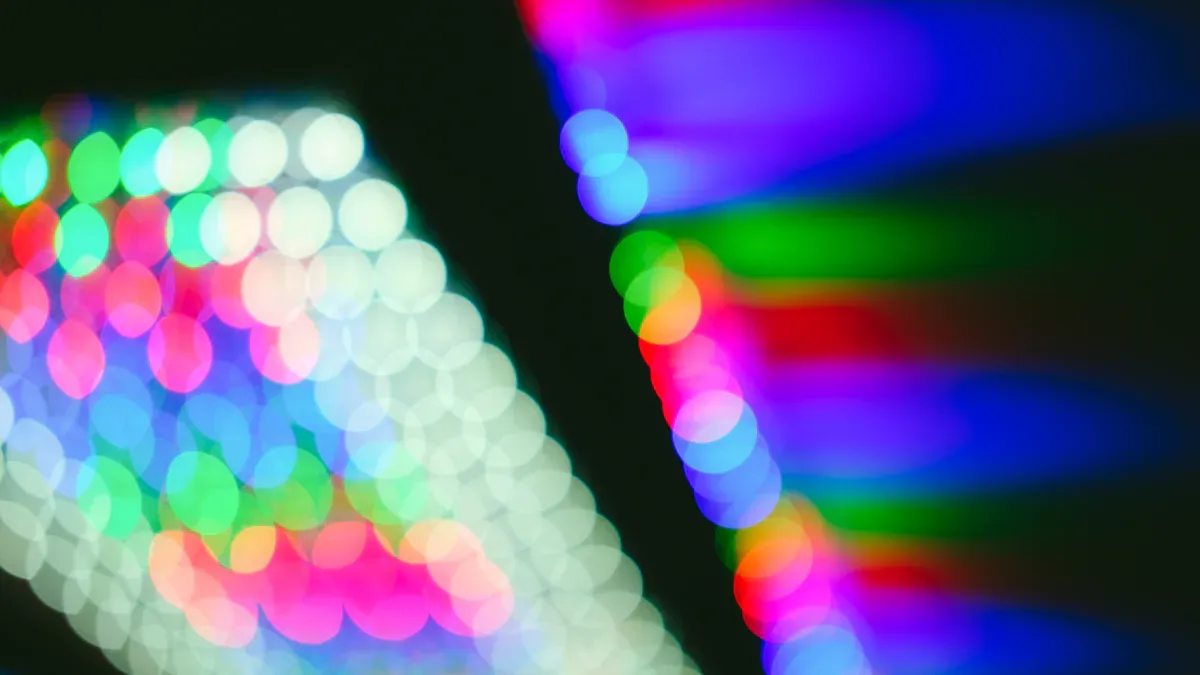What Is Micro LED and How Does It Power Next-Gen Displays

Micro LED display technology represents a revolutionary step in cutting-edge LED display technology. Each pixel in Micro LED displays emits its own light, eliminating the need for a backlight. This self-emissive structure enables superior brightness, deep blacks, and exceptional energy efficiency. The market for Micro LED displays demonstrates remarkable growth, with projections rising from USD 1.12 billion in 2023 to nearly USD 179 billion by 2032, reflecting a CAGR of over 75% (according to Straits Research). BOE, recognized as a global leader in display innovation, continues to drive advancements in this field. Micro LED displays deliver high image quality, long lifespan, and lower energy consumption, making them ideal for diverse application scenarios.
Key Takeaways
Micro LED displays use tiny, self-lighting pixels that create bright, clear images with deep blacks and low power use.
This technology offers longer lifespan and better energy efficiency than OLED and LCD screens, making it ideal for many devices.
BOE leads in Micro LED innovation, developing advanced products that improve brightness, color, and energy savings.
Manufacturing Micro LED displays is complex and costly, but new methods and automation are helping to overcome these challenges.
The Micro LED market is growing fast, with strong demand in wearables, automotive, and high-end TVs, promising exciting future applications.
Micro LED Display Technology

Definition
Micro LED display technology represents a major leap in visual display technology. This technology uses micro light-emitting diode devices, which are extremely small—often less than 50 micrometers in size. These Micro LEDs form arrays that create high-resolution displays for a wide range of applications. Unlike traditional LCDs, Micro LED displays do not require a backlight. Each pixel emits its own light, making the structure simpler and thinner than both TFT LCD and OLED displays.
Micro LED displays use inorganic materials for their light sources. This choice results in higher brightness, better energy efficiency, and longer lifespan compared to OLEDs and LCDs. The pixels in Micro LED displays can be individually controlled, which leads to superior image quality, faster response times, and vibrant colors. The technology also supports flexible and ultra-thin displays, opening new possibilities for curved and foldable screens.
Micro LED displays stand out because they combine high brightness, energy efficiency, and durability in a single display technology. These features make them ideal for next-generation TVs, smartphones, wearables, and professional monitors.
BOE has established itself as a leader in Micro LED and MLED display innovation. The company has introduced several industry-first products, such as the Micro MPD P0.9mm, which uses high-transparency packaging to boost contrast by 50% and ensures excellent color consistency. BOE's advancements enable both ultra-large and ultra-small high-definition displays, setting new standards for image quality and energy savings.
Working Principle
The working principle of Micro LED displays centers on self-emissive pixels. Each Micro LED is an inorganic semiconductor device, typically made from III-V compounds. These Micro LEDs emit light directly when an electrical current passes through them. The color of each pixel comes from sub-pixels—tiny red, green, and blue Micro LEDs—arranged together on a single substrate.
A transistor backplane, often using active matrix technology, controls each Micro LED. This setup allows for precise digital control of brightness and color. The active matrix driving method keeps each pixel lit continuously, which improves power efficiency and image quality. Pulse width modulation (PWM) manages the brightness of each micro LED, ensuring stable color output and eliminating color shifts.
Micro LED displays achieve high pixel density because the Micro LEDs are so small.
The self-emissive nature of Micro LED displays means each pixel can turn on or off independently, producing deep blacks and high contrast.
The inorganic materials used in Micro LED displays provide greater durability and longer lifespan than organic-based displays.
The manufacturing process for Micro LED displays involves transferring millions of tiny LEDs from wafers to substrates. This process requires advanced integration technology to align and bond each Micro LED precisely. BOE has pioneered mass production techniques, such as the world's first Micro LED mass production line, which supports both ultra-large and ultra-small displays with high-definition performance.
BOE's MLED products further demonstrate the company's commitment to innovation. For example, the BYH COB Pro P0.9 Ultra-Low Power display features a large-board module design, 1200 nits peak brightness, and energy-saving technology. These innovations help reduce power consumption and set new benchmarks for green, low-carbon displays.
The working principle of micro led ensures that each pixel acts as a self-contained light source. This design delivers unmatched brightness, efficiency, and image clarity, making Micro LED displays a top choice for next-generation applications.
How Micro LED Works
Structure
Micro LED displays feature a sophisticated structure that sets them apart from traditional display technologies. Each panel consists of several key components, working together to deliver exceptional performance and reliability. The table below outlines the main structural elements found in a typical Micro LED display:
Component | Description / Layers |
|---|---|
Micro LED Chip | Sapphire substrate, GaN buffer layer, N-type GaN, multi-quantum well active layer, P-type GaN contact layer, current spreading layer, electrodes |
Backplane Substrate | Circuit substrate, which can be PCB, glass, or silicon depending on application and size |
Protective Layers | Protective coatings applied by physical deposition processes |
Upper Electrodes | Electrodes deposited on top of the LED chip for electrical connection |
Driver Circuits | Integrated circuits made using CMOS technology to drive the LED matrix |
This layered structure enables Micro LED displays to achieve high pixel densities and remarkable image clarity. The millions of tiny, individually controlled self-emitting LED pixels allow for true black levels and vivid images. The solid-state nature of the technology ensures long lifespan and durability, while the modular design offers flexibility for various display sizes and shapes. Nearly 180-degree wide viewing angles maintain consistent color and contrast, even from extreme positions. The ability to turn off individual pixels completely leads to low power consumption, especially in portable devices.
The advanced structure of Micro LED displays supports their outstanding performance, making them ideal for next-generation TVs, smartphones, wearables, and professional monitors.
Electroluminescence
Electroluminescence forms the core of Micro LED technology. This phenomenon occurs when a material emits light in response to an electric current or strong electric field. In Micro LED displays, each microscopic inorganic LED pixel emits light when electrons and holes recombine within the semiconductor. This process releases energy as photons, producing visible light.
Unlike LCDs, which rely on a backlight, Micro LED displays are self-emissive. Each pixel acts as its own light source, resulting in superior brightness, efficiency, and image clarity. The use of inorganic materials, such as gallium nitride (GaN), allows Micro LED to achieve higher brightness and greater efficiency compared to OLEDs, which use organic compounds. Micro LED also avoid issues like burn-in and degradation, common in organic-based displays.
The efficiency and brightness metrics of Micro LED displays are impressive. For example, GaN-on-GaN blue Micro LED reach peak external quantum efficiency (EQE) values of about 11.5% (according to a research of SpringerOpen in 2024), while green variants can achieve luminous flux up to 15.0 mlm at 500 A/cm². These values demonstrate the high brightness and efficiency possible with this technology. The chart below compares key performance metrics for different micro-led types:

Data source: Research from SpringerOpen in 2024
Micro LED is suitable for high-power applications and environments with strong ambient light. Advances in material quality and light extraction techniques continue to push the limits of brightness and efficiency in Micro LED displays.
Manufacturing Process
The Micro LED production processes involve several intricate steps, each critical to achieving high yield and display quality. The following ordered list summarizes the key stages:
Contaminant Control and Wafer Preparation
Manufacturers maintain strict impurity control during wafer processing. High-purity cleaning removes surface particles and oxides, ensuring the quality of epitaxial layer growth.Chip Cutting and Wafer Separation
High-precision laser or mechanical cutting separates Micro LED chips. Laser cutting provides sub-micron accuracy, which is essential for size consistency. After cutting, chemical or mechanical methods separate the chips without damage.Micro LED Formation via Material Deposition and Electrode Formation
Semiconductor layers, such as GaN or InGaN, are deposited with precise control over thickness and doping. Electrodes are formed in n-type and p-type regions using transparent materials like ITO, ensuring even current distribution and minimal light blockage.Photolithography and Etching Processes
Photolithography patterns the wafers with sub-micron precision, using advanced techniques for RGB pixel arrays and electrode layers. Etching, both dry and wet, sculpts microstructures essential for light emission and chip integration. Surface passivation reduces defects and improves reliability. These processes enable the formation of vertical structures and micro-lenses, enhancing light extraction efficiency and brightness.
The density of Micro LED displays depends on the precision of these manufacturing steps. High pixel densities require the placement of millions of microscopic LEDs onto substrates with extreme accuracy. For example, a 4K UHD display contains nearly 25 million individual pixels, each requiring perfect alignment. Even a defect rate of 0.1% can result in thousands of defective pixels. Manufacturers use machine learning-driven process optimization, novel epitaxial growth, wafer sorting, and real-time process correction to improve yield rates. Repair methods, such as using multiple spatially independent electrode pairs, allow for the replacement of defective pixels without scrapping entire panels.
Industry leaders, including BOE, invest heavily in research and development to overcome these challenges. They adopt larger substrates and advanced transfer technologies to scale up production while maintaining high yield and cost-effectiveness. The Micro LED production processes continue to evolve, driving the commercialization of next-generation displays with unmatched brightness, efficiency, and durability.
Micro LED vs. Other Displays

LCD and OLED Comparison
Micro LED displays have transformed the display industry by offering a unique combination of performance and efficiency. Unlike LCDs, which depend on backlighting, Micro LED displays use self-emissive pixels. This structure enables deeper blacks and higher contrast. OLED displays also use self-emissive technology, but their organic materials degrade over time, leading to shorter lifespans and risks like burn-in.
The table below highlights key differences among these display types:
Metric | TFT LCD | OLED | Micro-LED |
|---|---|---|---|
Contrast | Medium | High | High |
Response Time | Milliseconds | Microseconds | Nanoseconds |
Power Consumption | High | Medium | Low |
Micro LED displays achieve nanosecond response times, far surpassing LCDs and even OLEDs. Their power consumption remains lower than both, making them ideal for portable devices and large-format microled tvs. In terms of durability, Micro LED displays use inorganic materials, resulting in longer lifespans and higher reliability. They perform well in outdoor and high-brightness environments, unlike OLEDs, which can suffer from burn-in and performance loss under harsh conditions.
Mini LED and MLED by BOE
Mini LED technology bridges the gap between traditional LCDs and Micro LED displays. Mini LEDs, sized around 100–200 microns, serve as advanced backlights for LCD panels. This approach improves contrast and color accuracy but does not achieve the pixel-level control of Micro LED displays. Micro LED displays use even smaller LEDs—often less than 100 microns—where each LED acts as an individual pixel, delivering best-in-class image quality and energy efficiency.
BOE’s MLED displays represent a significant advancement in the market. MLED technology combines high brightness, wide color gamut, and long lifespan, with energy savings of up to 30% compared to traditional LED displays. BOE’s MLED products support ultra-thin designs and deliver consistent performance across various applications, including Micro LED TVs, monitors, and automotive displays. The robust structure and advanced manufacturing processes ensure that BOE’s MLED displays meet the demands of next-generation devices.
Micro LED displays, with their superior efficiency, brightness, and durability, set a new standard for display performance. BOE’s leadership in MLED technology continues to drive innovation in the global display industry.
Advantages of Micro-LED
Brightness and Efficiency
Micro LED displays stand out for their exceptional brightness levels and energy-efficient operation. Each pixel in these displays emits its own light, allowing for higher peak brightness than OLED displays. This makes Micro LED displays ideal for high-light environments and HDR content. The self-emissive design means that only the necessary pixels illuminate, reducing overall power consumption. Micro LED displays can reach much higher than traditional lighting sources.
Manufacturers use advanced techniques to maintain high brightness without generating excessive heat. For example, dynamic driving voltage adjustment and dual-mode current control help optimize power use while keeping the display cool. The table below summarizes some of these techniques:
Technique | Description | Impact |
|---|---|---|
Dynamic voltage adjustment | Adjusts voltage based on temperature | Maintains brightness, lowers power use |
PWM control | Modulates pulse width for brightness | Reduces flicker, saves energy |
Adaptive low power mode | Dims inactive sections | Preserves image quality, saves power |
These features make micro led displays a top choice for micro led application scenarios where high brightness and efficiency are critical.
Color and Lifespan
Micro LED displays deliver vibrant colors and a longer lifespan compared to other display technologies. The narrow spectral widths of RGB subpixels allow these displays to cover a wide color gamut. This wide color range ensures accurate and vivid colors for both professional and consumer applications.
The inorganic materials used in Micro LED displays prevent burn-in and degradation, which are common issues in OLED and LCD panels. As a result, Micro LED displays maintain stable brightness and color performance over time. Their longer lifespan makes them suitable for commercial and continuous operation environments. Users benefit from displays that retain high brightness and color accuracy throughout their service life, supporting demanding micro led application scenarios.
Micro LED displays offer a unique combination of high brightness, wide color gamut, and longer lifespan, making them a leading choice for next-generation display performance characteristics.
BOE MLED Benefits
BOE’s MLED displays showcase the advantages of microled display technology in real-world applications. Products like the HC True Colour series and the α-MLED technology in high-end monitors deliver high brightness, high contrast, and wide color gamut. These displays provide superior image quality and reliability, with low power consumption that supports energy-efficient operation.
BOE’s Micro Pixel Device platform enhances die-bonding efficiency and yield rates, ensuring consistent performance for fine-pitch displays. The robust design and advanced local dimming technology enable BOE MLED displays to excel in both professional and consumer markets. Users experience the full benefits of high brightness, vibrant colors, and longer lifespan, reinforcing BOE’s leadership in display innovation.
BOE’s commitment to Micro LED and MLED innovation continues to set new standards for display performance, supporting a wide range of application needs.
Challenges and Future
Production Complexity
Micro LED display manufacturing presents several technical hurdles that set it apart from other display technologies. The process requires transferring millions of tiny LEDs from source wafers to display panels with extreme precision. Manufacturers must achieve placement accuracy within a dedicate level of detail that current pick-and-place and flip-chip methods struggle to deliver efficiently for mass production. Even a small error rate during transfer can result in thousands of defective pixels, especially in high-resolution displays.
Key production challenges include:
The transfer process demands high precision, making it difficult to maintain cost-effectiveness.
Achieving uniform brightness and color accuracy across millions of LEDs is essential for image quality.
The complex manufacturing process and expensive materials contribute to high production costs.
New transfer technologies, such as inkjet printing, laser lift-off, and cartridge-based systems, are under development to improve efficiency.
Automation and artificial intelligence offer potential solutions to optimize manufacturing and increase yield rates.
Miniaturization of LED chips enables higher pixel densities and better resolution, but also increases complexity.
Manufacturers continue to innovate with advanced transfer methods, such as thin-film-transfer and nanowire-based techniques. Companies also explore monolithic integration, combining LED and TFT technologies to streamline production. These advancements aim to address the core challenges and support the growing demand for Micro LED displays in various application scenarios.
Note: The Micro LED market status remains in an experimental phase, with ongoing research and development focused on overcoming these production barriers.
Market Outlook
The outlook for Micro LED displays shows strong growth potential across multiple industries. Despite current production complexities and high costs, ongoing innovation is expected to drive down expenses and improve manufacturing efficiency. Major technology companies invest heavily in research, accelerating the adoption of Micro LED technology.
Industries expected to drive adoption include augmented reality, automotive, luxury home theaters, and commercial digital signage. Automotive manufacturers seek Micro LED for dashboards and heads-up displays, while AR developers focus on compact, high-brightness solutions. Retail and transportation sectors explore customized displays for unique application needs.
The Micro LED market status reflects a rapidly evolving landscape, with new applications emerging in consumer electronics, automotive, and professional environments. As production techniques mature, Micro LED displays will likely become a standard for next-generation visual experiences.
Micro LED display technology continues to redefine the future of visual experiences. Its unique strengths—such as high brightness, wide color gamut, seamless modularity, and sensor integration—enable new possibilities in consumer electronics, automotive, and AR/VR.
BOE leads the industry with advanced Micro LED and MLED innovations, setting benchmarks in performance and sustainability.
Recent breakthroughs in mass production and transparent displays accelerate commercialization across every application, from smart devices to immersive entertainment.
Micro LED’s evolution promises to transform how people interact with digital content for years to come.
FAQ
What makes Micro LED different from OLED and LCD?
Micro LED uses self-emissive inorganic LEDs for each pixel. This design delivers higher brightness, longer lifespan, and better energy efficiency than OLED and LCD. Micro LED also avoids burn-in issues common in OLED displays.
Can Micro LED displays be used in flexible or curved devices?
Yes. Manufacturers can create flexible and curved Micro LED displays by using thin, adaptable substrates. This feature enables new applications in wearables, automotive dashboards, and foldable devices.
How does BOE contribute to Micro LED innovation?
BOE leads the industry with advanced Micro LED and MLED technologies. The company invests in mass production, transparent displays, and high-yield manufacturing. BOE’s innovations set new standards for performance and sustainability in next-generation displays.
Are Micro LED displays suitable for outdoor environments?
Micro LED displays perform well outdoors. Their high brightness and robust structure ensure clear visibility in sunlight and resist environmental stress. This makes them ideal for digital signage, automotive, and public information displays.
See Also
Understanding The Basics Of UB Cell Display Technology
Exploring LCD Technology Functionality And Its Importance Today
A Comprehensive Guide To Popular LED Terms And Types
Key Features To Consider When Choosing A Gaming Display
An Introductory Guide To Understanding Display Technology Basics